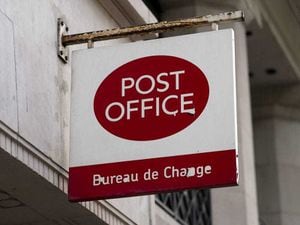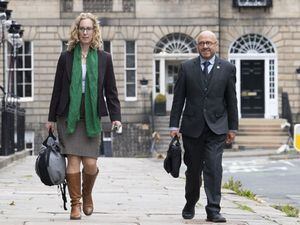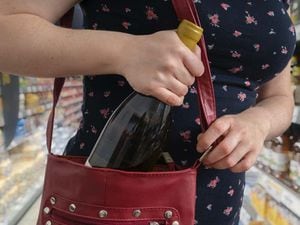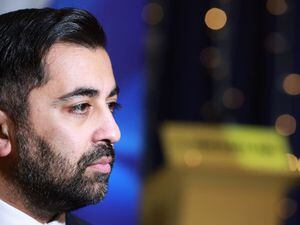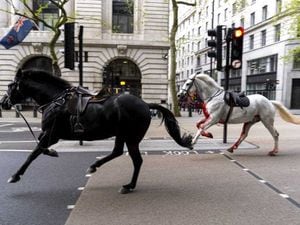Calf born through embryo transfer gives hope to rare semi-wild cattle breed
Native livestock breeds are as much a part of biodiversity as wild animals, the Rare Breeds Survival Trust says.
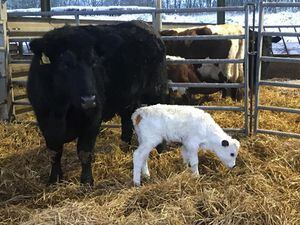
The successful birth of a female “Vaynol” calf through embryo transfer has boosted efforts to save one of the UK’s rarest native cattle breeds, conservationists said.
The calf, called Snow for her white colouring and the conditions at the time of her birth near Edinburgh on January 6, was born through the first successful embryo transfer for a semi-wild cattle breed.
Vaynol cattle are descended from ancient herds of white cattle, which were brought over to Britain when it was still connected to Europe by land and were in the country before Stonehenge was built.

They are one of five cattle breeds whose situation is listed as “critical” on the Rare Breeds Survival Trust (RBST) watchlist, with just 23 breeding females in 2019 across five herds, which are kept apart to protect against disease outbreaks.
Conserving rare native breeds is as much a part of protecting the UK’s biodiversity as saving wild animals, the RBST’s chief executive Christopher Price said.
Vaynol embryos using in vitro embryo production techniques were implanted in recipient Angus cows in a project by the RBST and animal breeding specialists AB Europe.
The method, which is most commonly used commercially with beef and dairy cattle, has saved the genetic line of Snow’s mother who had struggled to reproduce.
When a breed’s population is so low, the birth of new females is vitally important to guard against inbreeding and allow new herds to be created.
Mr Price said: “Snow’s birth really is momentous for the Vaynol breed, which is among our very rarest native cattle.”
He said white cattle and the breeds descended from them were important for their cultural value, as well as for sustaining the biodiversity of farmed animals, which the UK is obliged under international treaties to protect.
The Vaynol declined in the face of small numbers, modest fertility and a shift towards faster-growing, bigger cattle, supported by expensive artificial feed and other inputs, as the UK joined the EU’s Common Agricultural Policy, he said.
But Mr Price suggested primitive native cattle breeds could make a comeback as subsidies are removed from farmers, who will not be able to afford expensive inputs.
And he said: “Consumers are getting more concerned about welfare and where their food comes from, the environmental footprint of their meat, and so many native breeds provide the answer to that.
“They were bred to thrive in an British landscape on grass, without lots of artificial feed.
“So we can see them coming back but they’ve got to survive to do that, which is why what has happened with this Vaynol breed is so important.”
Landowners who want to carry out rewilding projects can also use native cattle breeds to provide the grazing function needed for the landscape.

“Snow was born on a minus 6C January night, we gave her extra colostrum and kept checking her, but she did very well and continues to thrive.”
The calf will remain with her Angus cow surrogate mother for the time being and a decision will be made as to whether to reintroduce her to an existing Vaynol herd or to establish a new herd.

